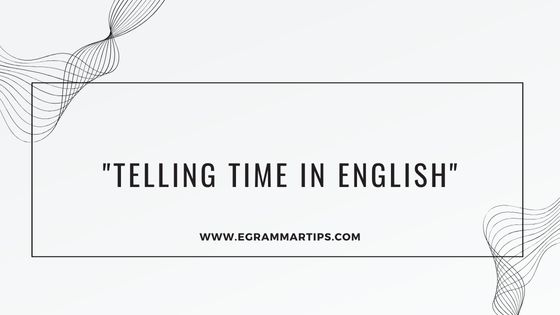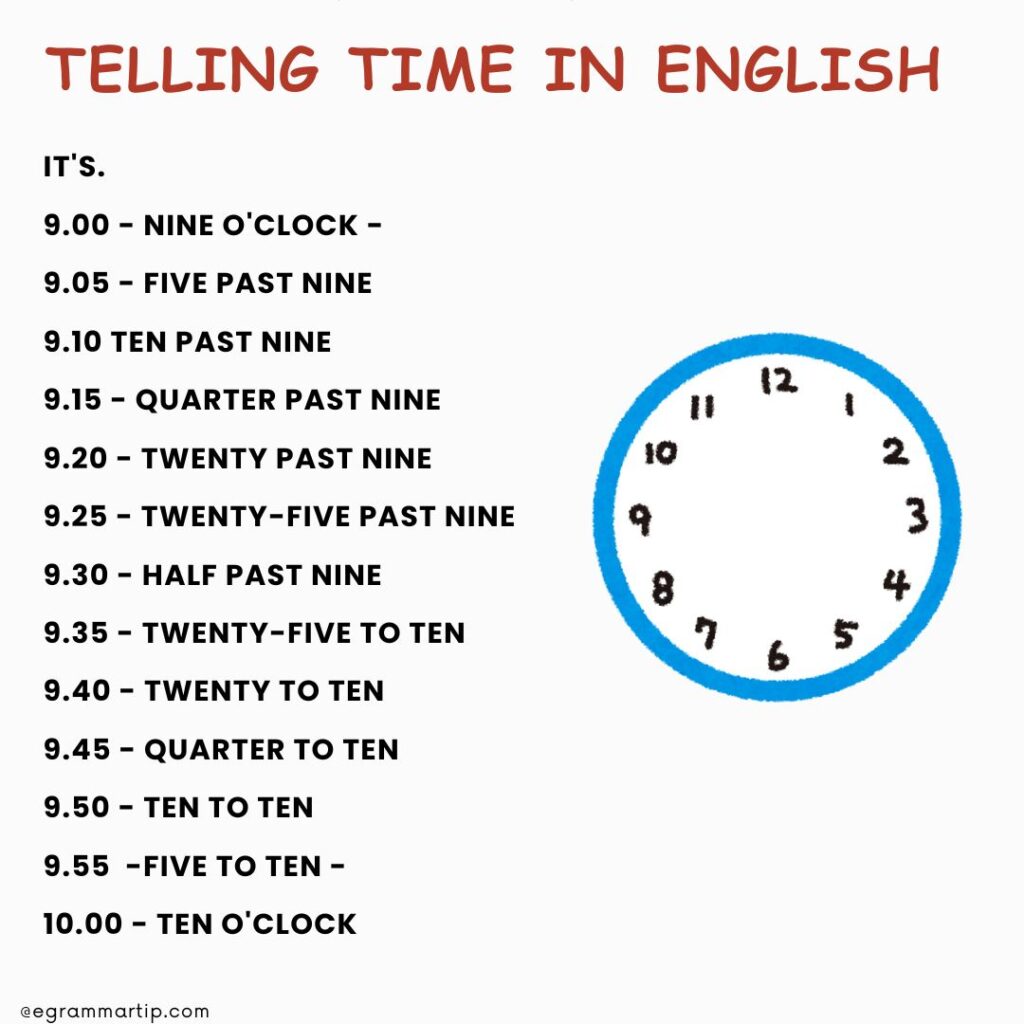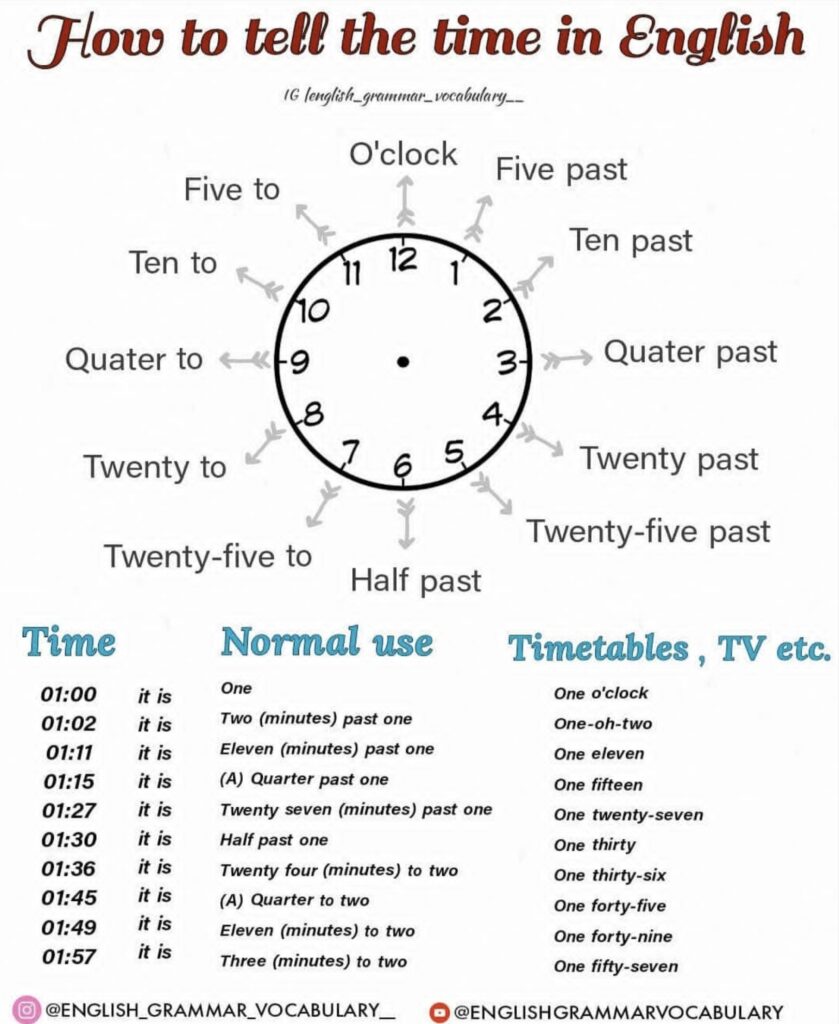
Welcome back to our English speaking course! On Day 2, we’re focusing on an essential skill: telling time in English . Mastering this topics will help you navigate daily life and communicate effectively in English. Let’s dive in!

Telling Time in English
Understanding how to tell time is fundamental for scheduling, planning, and discussing daily activities. Here’s a comprehensive guide to help you master this skill.
Basic Time Structure
•Hours: 1 to 12, using AM for morning and PM for afternoon and evening.
•Minutes: 0 to 59
Formats for Telling Time
Exact Hours: When the minute hand is on the 12, it’s a whole hour. In English, we use “o’clock” to indicate this.
•1:00 – One o’clock
•2:00 – Two o’clock
Key Points:
“O’clock” is used only for whole hours.It can be omitted in casual speech: “It’s five” instead of “It’s five o’clock.”
Minutes Past and To the Hour
For times that are not on the hour, we use “past” and “to.”
Past: Used for minutes 1-30 after the hour.
To: Used for minutes 31-59, indicating the time remaining until the next hour.
•5:10 – Ten past five
•5:50 – Ten to six
Key Points:
“Past” is used when the minute hand is on the right side of the clock (1-30 minutes).
“To” is used when the minute hand is on the left side of the clock (31-59 minutes).
Quarter and Half Hours
For 15 and 30 minutes, we often use “quarter” and “half.”
•3:15 – Quarter past three
•5:45 – Quarter to six
Key Points:
“Quarter” means 15 minutes.
“Half” means 30 minutes.
These terms are often used in everyday conversation for simplicity.
Digital clock
Digital clocks display time using numbers, and we read these times straightforwardly.
Examples:
7:30 – Seven thirty
12:45 – Twelve forty-fives
Key Points:
The hour is stated first, followed by the minutes.This format is commonly used in schedules and digital devices.

Using AM and PM
To distinguish between morning and afternoon/evening times, we use “AM” and “PM.
“AM (Ante Meridiem): From midnight (12:00 AM) to noon (11:59 AM).
PM (Post Meridiem): From noon (12:00 PM) to midnight (11:59 PM).
Examples:
9:00 AM – Nine o’clock in the morning
3:00 PM – Three o’clock in the afternoon
Key Points:AM and PM are essential for clarity, especially in written schedules.
In casual conversation, phrases like “in the morning” or “in the evening” are often used instead.
Asking for the time in English
Asking for the time in English is straightforward, but it can vary depending on the context and formality. Here are several ways to ask for the time, along with example responses:
1. Simple and Direct
Question: What time is it? Response: It’s 3:45 PM.
2. Polite and Formal
Question: Could you tell me the time, please? Response: Certainly, it’s 10:15 AM.
3. Casual and Informal
Question: Do you have the time? Response: Yeah, it’s 8:30.
4. Using “Know“
Question: Do you know what time it is? Response: It’s 6:00 PM.
5. Adding “Now”
Question: What time is it now? Response: It’s 1:45 PM.
6. Specifying AM or PM (If Needed)
Question: Is it 5 AM or 5 PM? Response: It’s 5 PM.
7. Indicating a Specific Context (e.g., event)
Question: What time does the meeting start?
Response: It starts at 2:00 PM.
Hi! My name is baguy.i been injoyed this experience